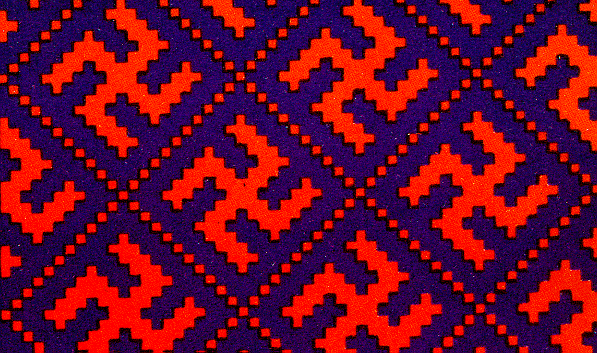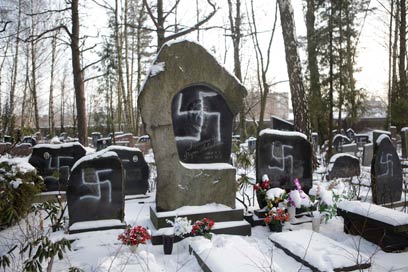This post has been coming for a long time, but I never really knew exactly how to approach it. I don't know when I first noticed the swastika; it probably was in some sort of pattern on mittens or socks or a restaurant menu or something of the kind. In Latvia the swastika is called the
Ugunskrusts or
Pērkonkrusts (Fire Cross and Thunder Cross, depending on if it is rotating clockwise or counterclockwise.)
Today in "Culture History" class we spent an hour copying down Latvian folk symbols and what they meant. Despite the fact that I knew the swastika was an ancient folk symbol, when it appeared on the board and remained there for the entire period I literally felt sick.
Yes, it's just a folk symbol. Yes, it's part of pagan Latvian culture. Yes, it originally had nothing to do with Nazi Germany, antisemitism, etc. But the fact is that Latvia has a pretty sketchy record when it comes to do with both of those things. The majority of the country welcomed the Nazis with open arms, as they seemed to be the better alternative to the Soviets; Latvia was home to approximately 85,000 Jews before World War II, and over 70,000 were killed during the Holocaust. According to these figures, which are on the lower end of the reliable estimates, that means that 82% of Latvian Jews were massacred. And yet, the Holocaust isn't something that is discussed here. It's not exactly ignored, but the general opinion seems to be "We suffered too," i.e., Soviet deportations, the Gulag, etc. Surely, Latvia and Latvians suffered. Yes, their population was also heavily depleted. But the majority survived, even if they were forced to leave. There is honestly no comparison.
As I sat in class today and copied the swastika into my notebook as I was supposed to, I asked a classmate why nobody found it offensive. The response? "It's no big deal. It just isn't bad." When I pressed, the response was, "Maybe if I were Jewish." I have not met a single Jewish person in Latvia; I have not met a Latvian who knows a Jewish person. When you are in a country that has a problem with skinheads and neo-Nazism, when each year former members of the Latvian Legion - a formation of the Waffen SS - march through Riga, when things like
this happen in the middle of the capital city... There really is no way this is an entirely harmless symbol. I'm not saying people mean to do harm, but denying what the swastika symbolizes is dangerously close to denying the Holocaust, particularly in a country like Latvia.
 |
A screencap of a live TV broadcast of a folk dance event:
the dancers form a swastika in the middle.
|
 |
| Pattern on a placemat |
 |
| The swastika over Māra's cross, another national symbol. |
 |
| A pattern common on souvenir mittens |
 |
The Jewish cemetery defaced:
Riga, December 8, 2010. |











